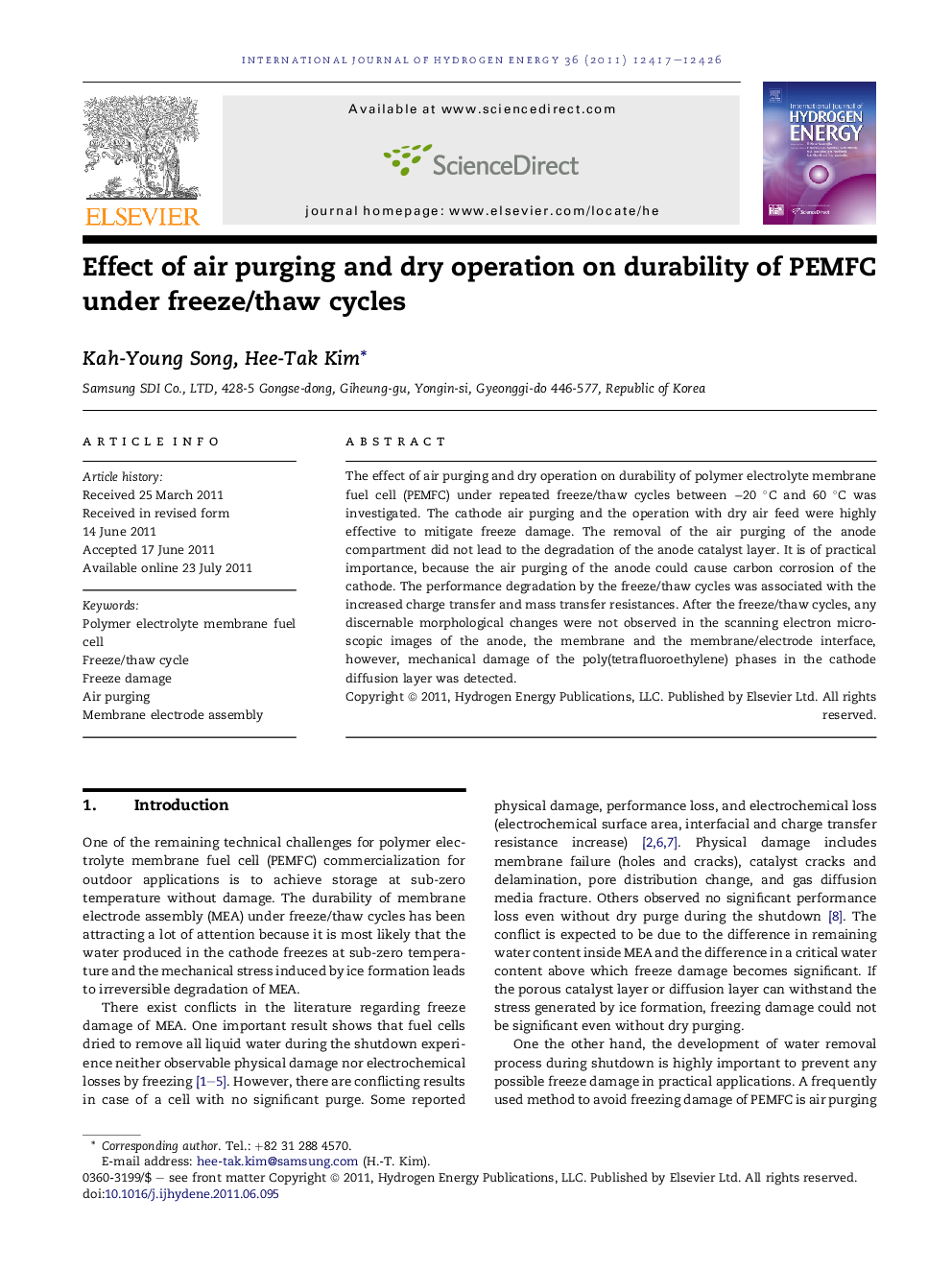| Article ID | Journal | Published Year | Pages | File Type |
|---|---|---|---|---|
| 1282445 | International Journal of Hydrogen Energy | 2011 | 10 Pages |
The effect of air purging and dry operation on durability of polymer electrolyte membrane fuel cell (PEMFC) under repeated freeze/thaw cycles between −20 °C and 60 °C was investigated. The cathode air purging and the operation with dry air feed were highly effective to mitigate freeze damage. The removal of the air purging of the anode compartment did not lead to the degradation of the anode catalyst layer. It is of practical importance, because the air purging of the anode could cause carbon corrosion of the cathode. The performance degradation by the freeze/thaw cycles was associated with the increased charge transfer and mass transfer resistances. After the freeze/thaw cycles, any discernable morphological changes were not observed in the scanning electron microscopic images of the anode, the membrane and the membrane/electrode interface, however, mechanical damage of the poly(tetrafluoroethylene) phases in the cathode diffusion layer was detected.
► The effect of air purging and dry operation on freeze/thaw durability of PEMFC. ► The cathode air purging and the operation with dry air feed mitigate freeze damage. ► The removal of air purging of anode does not lead to anode degradation. ► Mechanical damage of cathode diffusion layer during freeze/thaw cycles.
